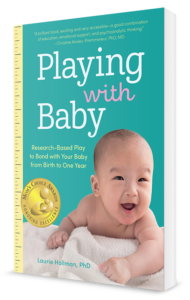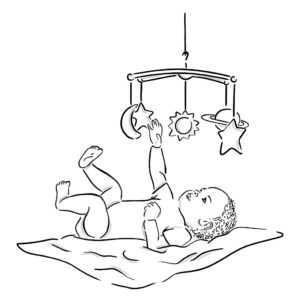The Importance of Play for Children
Play is a Child’s Work: How Parents Encourage Creativity and Learning

Play is how children learn, discover, express curiosity, and communicate. Different kinds of play bring out different aspects of our kids’ personalities and points of view. Parents can help their children learn, make new discoveries, and enjoy adventures by encouraging play time activities.
When Children Devise Their Own Play

How many times do you hear some children say, “I’m bored.” This is the opportunity to help them find their own ways of creating play. Encourage them to go in a room you don’t mind messing up and doing “whatever you want that tells a story.”
Making forts from couch pillows, creating hide-outs under big trees, playing house and school, and going to work are all ways kids create their own world views.
When children play with a doll house, for example, they make up stories that actually communicate their views of family life. Some kids are so transparent they even give the dolls their own names! It’s a great way to listen in from a distance and hear how they view their parents, how grown-ups and kids get along, and the activities they think are important.
When they play, parents should not interfere or even give suggestions. This is a time for kids to create on their own and they are avid story tellers. It’s also a way they solve conflicts and devise interesting solutions to problems.
When Parents Offer More Structured Activities

Structured play is another way to learn. Baking, crafts, athletics, trampolines, board games, video games and drawing with varied media are multiple ways to encourage kids to create and express themselves. Kids enjoy when parents join in and show they are interested in what is fun for kids.
Structured play with rules is a great avenue for teaching
- fairness
- being a good sport
- expressing feelings about losing
- tolerating learning new ways to approach problems and
- sharing
Having a discussion about how everybody enjoyed or didn’t enjoy the game is a great way to learn to express feelings while inventing new ways to play the game. Just because the rule book says to play a game one way doesn’t mean the kids can’t come up with many variations.
How Playing Becomes Learning in the Car

Discuss the present openly and look towards the future.
Very often children watch movies on long car rides. But it’s fun to play car games as well. Count how many cars you find of a certain color, guess how many people are in the cars that pass you, and count how many families look like yours. The ride passes quickly, and everyone in the family is enjoying each other instead of arguing and getting into one’s own shell with a video.
Guessing games in the car can lead to learning facts about random events in history and political events. Naming presidents, states, countries, colors, and different kinds of fruits or animals expands knowledge and vocabulary. Play spelling bees and try to add and subtract without paper.
All-in-All

Playing promotes learning and sharing while creating connections between the players who enjoy each other while they gain new knowledge and express themselves.